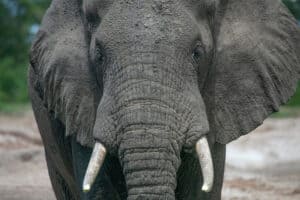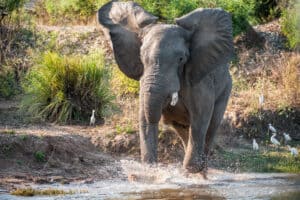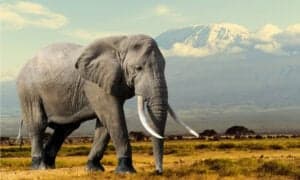Elephants are the largest land animals, only beaten in size by giants of the sea such as whales. Their large stature makes them truly a sight to behold, which is likely the reason they are loved by people around the world. Due to this fascination with elephants, they can be found everywhere in popular media, children’s books, and of course, zoos!
Another reason why they are so beloved is due to their extremely unique and exaggerated features. For instance, big ears, ginormous feet, and long trunks are just some of the traits that make elephants special.
Trunks are an especially interesting feature, as they almost act like the mouth, nose, and even hands of an elephant. The dexterity and maneuverability of trunks make them incredibly useful for elephants, and of course, incredibly interesting to us. Today, you will discover why elephants need such long trunks, and exactly what those trunks are used for!
Why Did Elephants Adapt Trunks?
Many people speculate on the exact reason why elephants developed long trunks in the first place. Upon first sight, they appear to simply be exaggerated features with minimal impact on survival, however, they serve a lot of important purposes. Out of the long list, eating, drinking, and communication are some of the most conspicuous uses for trunks.
In contrast to their modern uses, trunks are generally thought to have adapted in response to tusk development. In contrast to the relatively small (or even non-existent) tusks on modern elephants, their ancestors had extremely pronounced tusks.
Their tusks were often longer than their head, which made foraging an issue. Thus, it is thought that elephants with trunk-like features had a better chance of finding and being able to eat food, which allowed them to bypass the issues caused by tusks.
With evolution in mind, it was extremely important for their trunks to be flexible, mobile, and of course, controllable. These traits allowed them to grab onto food that was far from their face. Likewise, as elephants began to lose their tusks over time (or at least lose the length of their tusks), the trunks were still useful.
Over time, these traits likely intensified, which is the probable cause of long trunks. Nowadays, elephants have much less pronounced trunks depending on the species. Nevertheless, their spectacular trunks remain!
What Do Elephants Use Their Trunk For?
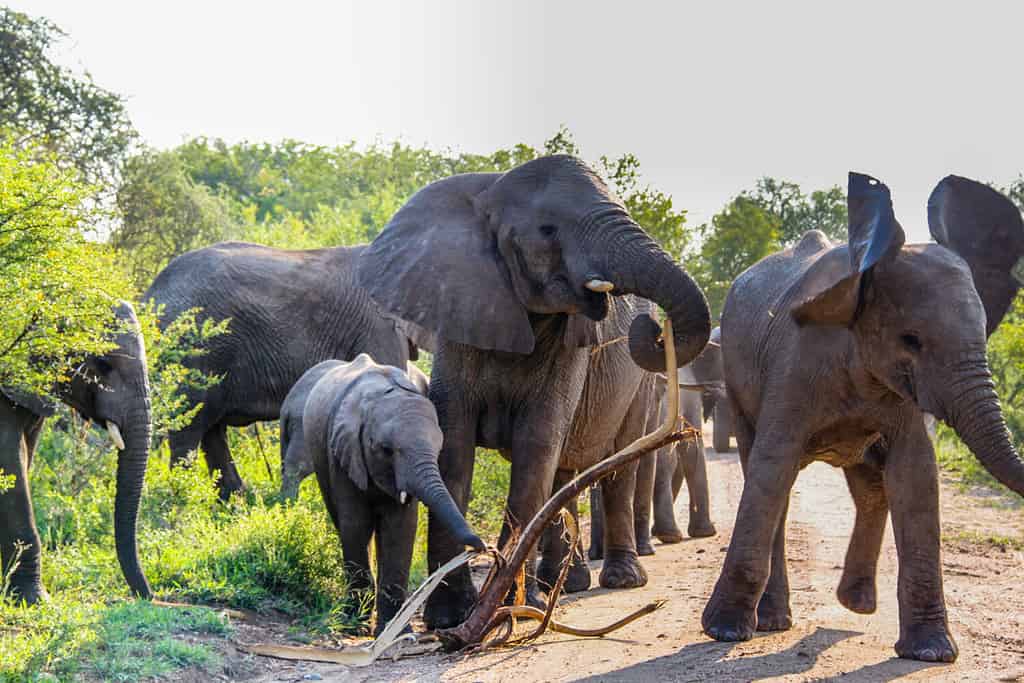
Trunks are one of the most well-adapted and diverse features in the animal kingdom. They have so many functions that all aid in elephant survival!
©Julia Chan Kar Wai/Shutterstock.com
While the benefit trunks once gave to ancestral elephants is mostly irrelevant nowadays, they are still extremely useful for them. Without the need to bypass the length of tusks, trunks are used for many other things. For instance, both simple tasks such as eating, and complex tasks such as communication are all facilitated by the trunk!
Trunks Are Used for Eating and Drinking
Primarily, trunks are used for eating and drinking purposes. Before food is even placed into their mouths, they can use their trunks to manipulate and crush it, which makes it easier to move and transfer. Once their food is properly prepared, they can use the suction power created by their long trunk. This suction holds food near it, and allows them to move it into their mouths without even needing to lower their head!
Once the food is close enough, they can reverse the direction of the suction to blow it into their mouth. They can use this same suction process for things like water. The large length of their trunk allows them to hold immense volumes of water in a single breath. This can allow them to drink a lot of water fast!
They can even use their trunks like massive super soakers if they need them. In contrast to being used for just drinking, elephants can spray out water to wash themselves, which just goes to show how amazing trunks are!
Elephants Use Trunks as a Sensory Organ
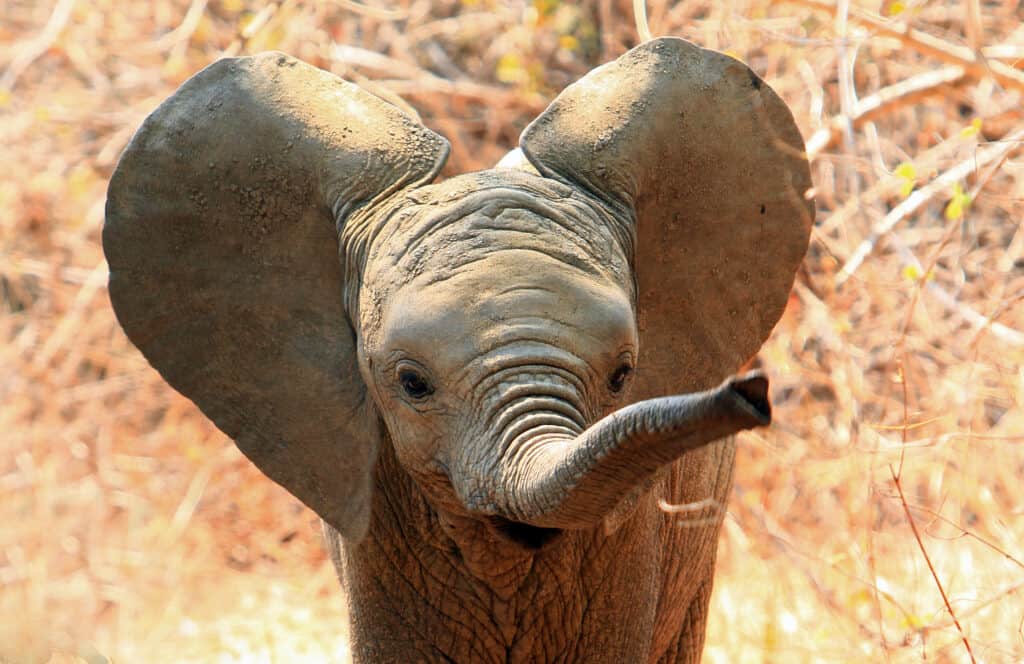
Being able to sense the world is incredibly important, especially for young elephants who are more susceptible to predation.
©paula french/Shutterstock.com
As you can probably guess, trunks also function like a nose for elephants. Trunks allow air to travel in, which enables scent molecules to travel up to specialized olfactory cells. Elephants have some of the best scent reception abilities among mammals. They have a surplus of olfactory cells, which allows them to pick up on even the tiniest of scents!
Trunks Give Elephants a Sense of Touch and Sense
On top of scent reception, trunks also act like the additional fingers and eyes of elephants, allowing them to explore the world around them in detail. Their trunks are incredibly thick, and have an extremely pronounced nerve connection that correlates to tactile function and perception.
In other words, elephants have an impeccable sense of touch connected to their trunks, especially near the end, where a lot of nerves are located. When elephants are exploring their environment, they will use their trunk almost like a hand to feel around objects. This can give them more information (in addition to smell) about the world around them!
They Can Be Used for Defense
Trunks are an extremely muscular organ. In some respects, an elephant has more control over its trunk than its other limbs. Furthermore, trunks can also wield more power than tusks or legs, often because they are so muscular and can carry a lot of momentum.
When they are provoked, trunks are one of the only controlled defenses elephants can use. This of course is second only to their size and stature, which is great for intimidating predators. Nevertheless, trunks can be used for bashing, smashing, and even grabbing onto things during an attack. Due to their power, trunks can certainly deal a lot of damage!
Trunks Are Used for Communication
Like any other animal, elephants have the inherent need to communicate with each other. Communication is especially important for elephants, as they are very social, and are prey animals. When they need to exhibit their emotions to other individuals in a herd or communicate about nearby dangers, elephants will use their trunks!
As a form of communication, trunks are used to display both visual and audio cues to other elephants. In terms of vocal communication, they can make extremely loud wailing sounds, which can relay messages to other elephants. These sounds can be modulated in many ways, even from the trunk. Just like a musical instrument, elephants can manipulate the shape of their trunk with their precise muscles. This in turn manipulates the quality and tone of the sound they create.
In tandem with the idea of auditory communication, trunks are surprisingly used to display visual messages as well. By holding their trunk up high, or posing in other conspicuous postures, elephants can convey signs of stress, joy, and even anger. For instance, it is common to see an elephant flair around their trunk and hold it up high when a predator is nearby. This is likely to make them appear larger and harder to fight!
Trunks Act Like Arms For an Elephant
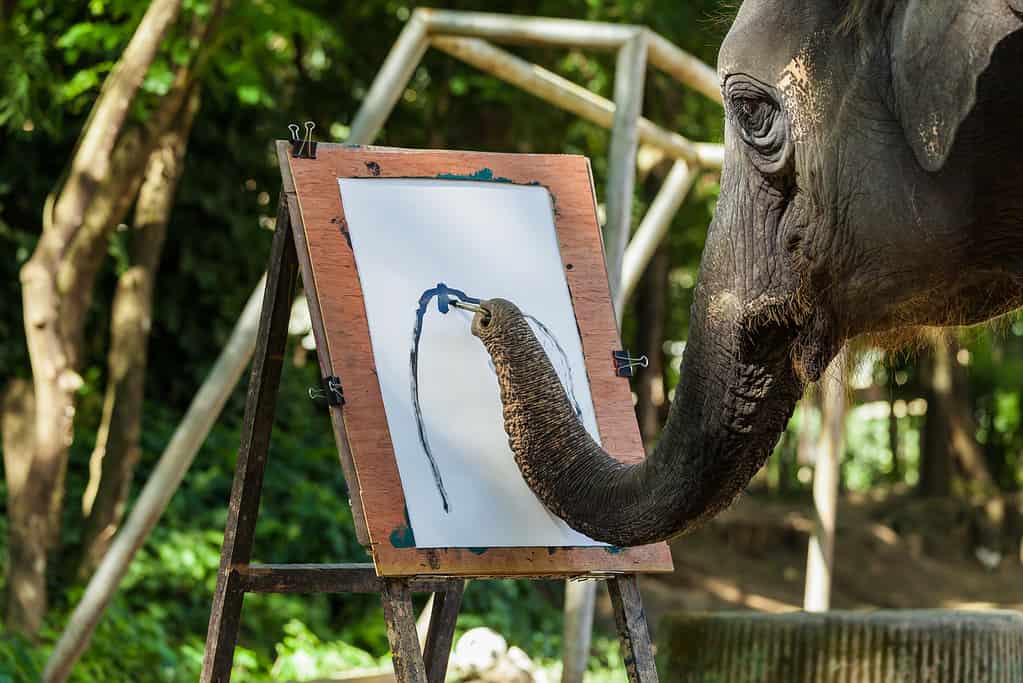
Although it’s not important for survival, elephants can go as far as to paint with their trunks!
©Jan-Schneckenhaus/iStock via Getty Images
One last and very conspicuous trait that long trunks aid in is the movement and manipulation of objects. Since all of the elephant’s limbs are planted on the ground, they instead use their trunks to function as hands. Additionally, their trunk can have even more control than limbs, almost acting like the prehensile tail of a monkey.
Having long trunks allows them to grab, hold onto, and even carry extremely odd-shape and large loads with them. For instance, picking up extraordinarily large loads of food, or even plant material such as tree limbs is an easy task for them!
The photo featured at the top of this post is © Dennis W Donohue/Shutterstock.com
Thank you for reading! Have some feedback for us? Contact the AZ Animals editorial team.




